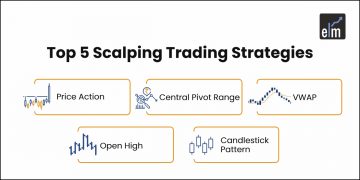If you’ve been around the stock market for a while and doing options trading, you’ve probably heard of many theories, including option Greeks, implied volatility fluctuation, and, of course, the maximum pain theory.
Most market theories are new, as the concept of options is relatively new in comparison to the history of the stock market.
These theories necessitate multiple data points for analysis, and traders require a suitable setup with a predefined risk appetite to make the most of these theories in practice.
Some theories work for a specific group of traders, while others work for a different group of traders. Having said that, tell us more about the max pain theory in this blog.
What is Maximum Pain Theory?
Max pain is the financial situation as seen through the eyes of option sellers or writers. It is calculated using the open interest volume in live option contracts at various strike prices.
According to this theory, there is a single strike price, the max pain price, at which the greatest number of call-and-put writers have built up their positions. They will suffer the most loss if the stock expires below the strike price.
Therefore, this theory suggests that the price of the stock will ultimately move towards the price at which maximum pain for sellers is present, and one can use this to create buying and selling strategies.
Understanding Maximum Pain Theory
The max pain theory holds that if the underlying asset’s price remains fixed at the strike price, options traders, particularly call-and-put sellers, can lose much money.
The maximum pain price is the price at which most open options contracts are trading. It’s known as open interest. It is the price at which most option holders will lose money at expiration.
The concept of maximum pain refers to the possibility that most traders who purchase and hold options contracts until they expire will lose money. And, because there is a greater than 80% chance that the option sellers will profit, the maximum pain theory has some validity.
How does it work in Options Trading ?
According to the maximum pain theory, when the price of an underlying stock rises, so does the number of worthless options.
As the options expiration date approaches, call-and-put writers will try to drive the price of their shares higher to capture a larger portion of their payouts.
According to the maximum pain theory, option writers hedge their contracts to avoid a loss.
Approximately 60% of options are traded out, and 30% are worthless. The remaining 10% is put to use.
The maximum pain theory is a contentious issue. Critics believe it is the result of market manipulation or a random event.
Example
Assume that Nifty50 is currently trading at Rs. 17660. According to the maximum pain theory, the strike prices of Rs. 17700 have the highest aggregate open interest of call and put options.

So, according to the Maximum Pain Theory, the index price on the date of expiry is likely to end closer to either of these strike prices, or options traders will face a maximum loss if the price closes significantly away from the max pain.
How to determine the point of Maximum Pain Theory?
Although calculating the maximum pain point takes a long time, it is a simple process. It is calculated by adding the value of all outstanding put and call options for all strike prices.
It is the sum of open interest on the call and put sides of the option chain found on the National Stock Exchange’s website. It can be calculated the same way for stocks and indexes.
The steps involved in calculating the maximum number of pain points are as follows:
- Determine the difference between the stock’s current market price and the strike price.
- Determine the open interest at that strike price and multiply it by the result obtained in Step 1.
- Repeat this calculation for both the call and put options.
- Add the values derived from the call to the open interests.
- Determine which strike price is the most valuable.
You can also do our course on Certification In Online Options Strategies
Disadvantages
The maximum pain price can fluctuate in real-time, making it difficult to use as a trading tool. However, it’s worth noting that the current stock price and the maximum pain price are very different.
Another issue could be that after putting in so much effort, you calculate the point of maximum pain, but when the stock price reaches that point, there will be no impact because the expiry date is far away. This strategy would be useful only if the expiry date were approaching.
Bottomline
The concept of the maximum pain point has only been around briefly. Compared to other theories and strategies, it is considered a relatively newer concept. This theory is more popular among traders, particularly those who write options and investors who use derivatives to hedge their cash market positions.
You can further enhance you knowledge through our options course. Check it out now!
We hope you found this blog informative and use the information to its maximum potential in the practical world. Also, show some love by sharing this blog with your family and friends and helping us spread financial literacy.
Happy Investing!







